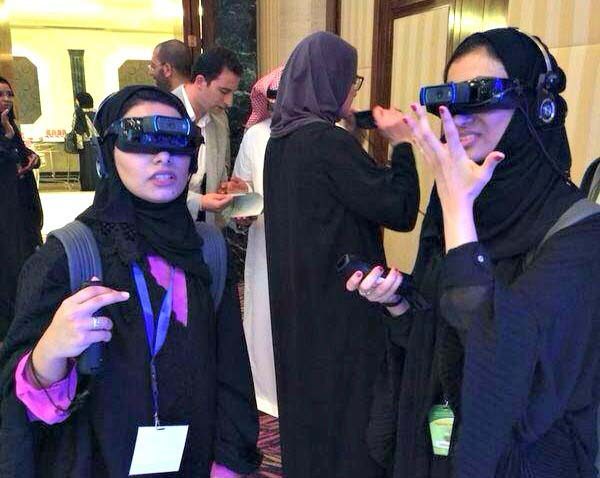
In an effort to better understand and treat certain mental health issues in Qatar, Hamad Medical Corp. has begun training doctors with a new interactive device that simulates psychotic episodes.
Speaking to Doha News, Dr. Suhaila Ghuloum, a senior psychiatry consultant at HMC, explained that the goal was to foster empathy for patients:
”This device helps the doctors understand and appreciate the agony that patients of psychosis go through and helps them understand the disease more,” she said.
Some 60 doctors at HMC’s psychiatry department will be trained to use the device, which was taken by developers on a Middle East tour last year.
The two main symptoms associated with psychosis are hallucinations and delusions, which can cause a person to lose contact with reality.
In a statement, Dr. Majid Al Abdulla, consultant psychiatrist and deputy chairman of HMC’s Psychiatry Department, said:
“In line with the National Mental Health Strategy, we are expanding our services, introducing the most advanced technology and recruiting highly-experienced experts both nationally and internationally. This activity is part of our efforts to utilize the latest advances in knowledge and technology to provide the best possible care for our patients.”
Psychosis is affiliated – but not limited to – mental illnesses such as schizophrenia, severe depression and bipolar disorder. Some drug addictions can also result in psychosis.
How it works
As part of project “Labyrinth psychotica,” scientists developed two devices that distort reality and give users the opportunity to perceive their direct surroundings as a person experiencing a mental break would.
According to the official Labyrinth psychotica website:
“Like a flight simulator helps aspiring pilots in their journey of learning how to fly, technological tools can be developed in a way that may act as a prosthesis to a persons’ imagination, to help better understand what it is like to be in the mental state of psychosis.”
The device that has been introduced is akin to a pair of sophisticated goggles that users wear on their eyes and produces an augmented reality experience. It consists of two LED screens that are aligned, similar to looking at a high-resolution wide-screen TV.

It also contains a single camera that enables users to see and hear their surroundings, which are manipulated in real-time. Video and audio effects to distort surrounding images are also added.
Ghuloum described using the technology as being part of a “4D game,” except it is akin to being in the head of a patient.
During the “game,” a user is asked to participate in a medical experiment, where the participant is “the hero.” The mission is to help Jamie, a fictional character who is suffering from psychosis.
The user is “uplinked” to Jamie’s mind. The task includes following her memories, voices, thoughts and finding clues about her experiences. This is collected in a database, that would be used in Jamie’s therapy.
The experience lasts only 12 minutes. It includes several scenes, where eight characters are part of a story evolving toward a climax.
Building empathy
Many who have tried the goggles and were interviewed in a video posted on the project’s official website said they didn’t find the experience entertaining.
“It’s great to be able to step out of that,” one person said.
“It’s difficult to know what is reality and what is not,” another participant said. “Nothing makes sense here,” someone else added.
One participant who was surrounded by several people didn’t realize their presence and said, “I’m utterly alone now.”
The users also concluded that it was difficult to concentrate on their “mission.” They were distracted by the voices and visuals in Jamie’s head. Some of them confused their reality with Jamie’s.
The experience demonstrated how difficult it is for patients with psychosis to focus on everyday tasks and communication, with all the different noises and images running through their heads.
How it started
The device was created by Dutch-Canadian artist Jennifer Kanary, as part of her PhD project.
Kanary said that the incentive behind the technology was the death of her sister-in-law, who committed suicide in 2005 by jumping off the 7th floor of a building. She was diagnosed with schizophrenia.
“After her death, I was struck by the fact of how little I knew about psychosis or why she might have wanted to end her life,” Kanary explained in a statement.
There’s a stigma affiliated with mental health disorders. Despite the research on psychosis and other mental illnesses affiliated with it, it remains a mystery how the brain works under these circumstances.
Ghuloum said the device could help reduce this mystery and according to some users, it already has.
“I want to tell these people who judge (those who suffer from psychosis), go and walk a mile in their shoes and see what it’s like,” one user said.
Thoughts?







